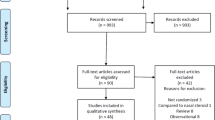Abstract
Objective
To assess the effect of ciprofloxacin on the pharmacokinetics of ropivacaine.
Methods
In a double-blind, randomised, cross-over study, nine healthy volunteers were treated for 2.5 days with 500 mg oral ciprofloxacin or placebo twice daily. On day 3, they received a single dose of 0.6 mg/kg ropivacaine intravenously over 30 min. Ropivacaine, 3-hydroxyropivacaine (3-OH-ropivacaine), and (S)-2′,6′-pipecoloxylidide (PPX) in venous plasma and urine were measured for up to 12 h and 24 h, respectively.
Results
Ciprofloxacin decreased the mean clearance (CL) of ropivacaine by 31% (P<0.05), with a considerable inter-individual variation (range from −52% to +39%). It also decreased the area under the plasma concentration–time curve (AUC) of 3-OH-ropivacaine by 38% (P<0.05) and urinary excretion of 3-OH-ropivacaine by 27% (P<0.05). Ciprofloxacin increased the AUC of PPX by 71% (P<0.01) and urinary excretion of PPX by 97% (P<0.01).
Conclusion
Ciprofloxacin modestly decreased the mean ropivacaine CL by inhibiting the CYP1A2-mediated formation of 3-OH-ropivacaine. At the same time, the CYP3A4-mediated formation of PPX was increased. There was a marked inter-individual variation in the extent of the interaction, and, for some individuals, the concomitant use of ciprofloxacin with ropivacaine might produce toxic symptoms.


Similar content being viewed by others
References
McClure JH (1996) Ropivacaine. Br J Anaesth 76:300–307
Lee A, Fagan D, Lamont M, Tucker GT (1989) Disposition kinetics of ropivacaine in humans. Anesth Analg 69:736–738
Halldin MM, Bredberg E, Angelin B, Arvidsson T, Askemark Y, Elofsson S, Widman M (1996) Metabolism and excretion of ropivacaine in humans. Drug Metab Dispos 24:962–968
Oda Y, Furuichi K, Tanaka K, Hiroi T, Imaoka S, Asada A, Fujimori M, Funae Y (1995) Metabolism of the a local anesthetic, ropivacaine, by human hepatic cytochrome P450. Anesthesiology 82:214–220
Ekström G, Gunnarsson U-B (1996) Ropivacaine, a new amide-type local anesthetic agent, is metabolized by cytochromes P450 1A and 3A in human liver microsomes. Drug Metab Dispos 24:955–961
Arlander E, Ekström G, Alm C, Carrillo JA, Bielenstein M, Böttiger Y, Bertilsson L, Gustafsson LL (1998) Metabolism of ropivacaine in humans is mediated by CYP1A2 and to a minor extent by CYP3A4: an interaction study with fluvoxamine and ketoconazole as in vivo inhibitors. Clin Pharmacol Ther 64:484–491
Jokinen M J, Ahonen J, Neuvonen P J, Olkkola K T (2000) The effect of erythromycin, fluvoxamine, and their combination on the pharmacokinetics of ropivacaine. Anesth Analg 91:1207–1212
Jokinen MJ, Ahonen J, Neuvonen PJ, Olkkola KT (2001) Effect of clarithromycin and itraconazole on the pharmacokinetics of ropivacaine. Pharmacol Toxicol 88:187–191
Jokinen MJ, Olkkola KT, Ahonen J, Neuvonen PJ (2001) Effect of rifampin and tobacco smoking on the pharmacokinetics of ropivacaine. Clin Pharmacol Ther 70:344–350
Davis R, Markham A, Balfour JA (1996) Ciprofloxacin. An updated review of its pharmacology, therapeutic efficacy and tolerability. Drugs 51:1019–1074
Bertz RJ, Granneman GR (1997) Use of in vitro and in vivo data to estimate the likelihood of metabolic pharmacokinetic interactions. Clin Pharmacokinet 32:210–258
Wijnands WJA, Vree TB, van Herwaarden CLA (1986) The influence of quinolone derivatives on theophylline clearance. Br J Clin Pharmacol 22:677–683
Batty KT, Davis TM, Ilett KF, Dusci LJ, Langton SR (1995) The effect of ciprofloxacin on theophylline pharmacokinetics in healthy subjects. Br J Clin Pharmacol 39:305–311
Harder S, Staib AH, Beer C, Papenburg A, Stille W, Shah PM (1988) 4-Quinolones inhibit biotransformation of caffeine. Eur J Clin Pharmacol 35:651–656
Raaska K, Neuvonen PJ (2000) Ciprofloxacin increases serum clozapine and N-desmethylclozapine: a study in patients with schizophrenia. Eur J Clin Pharmacol 56:585–589
Arvidsson T, Bruce HF, Halldin MM (1995) Lack of metabolic racemisation of ropivacaine, determined by liquid chromatography using a chiral AGP column. Chirality 7:272–277
Kamberi M, Tsutsumi K, Kotegawa T, Nakamura K, Nakano S (1998) Determination of ciprofloxacin in plasma and urine by HPLC with ultraviolet detection. Clin Chem 44:1251–1255
Lee A, Fagan D, Lamont M, Tucker GT (1989) Disposition kinetics of ropivacaine in humans. Anesth Analg 69:736–738
Rowland M, Tozer T (1995) Clinical pharmacokinetics, concepts and applications. 3rd edn. Williams and Wilkins, Baltimore, p 138
Falany CN, Falany JL, Wang J, Hedstrom J, von Euler Chelpin H, Swedmark S (1999) Studies on sulfation of synthesized metabolites from the local anesthetics ropivacaine and lidocaine using human cloned sulfotransferases. Drug Metab Dispos 27:1057–1063
Jeppesen U, Gram L F, Vistisen K, Loft S, Poulsen HE, Brøsen K (1996) Dose-dependent inhibition of CYP1A2, CYP2C19 and CYP2D6 by citalopram, fluoxetine, fluvoxamine and paroxetine. Eur J Clin Pharmacol 51:73–78
Emanuelsson B-MK, Zaric D, Nydahl P-A, Axelsson KH (1995) Pharmacokinetics of ropivacaine and bupivacaine during 21 hours of continuous epidural infusion in healthy male volunteers. Anesth Analg 81:1163–1168
Erichsen C-J, Sjövall J, Kehlet H, Hedlund C, Arvidsson T (1996) Pharmacokinetics and analgesic effect of ropivacaine during continuous epidural infusion for postoperative pain relief. Anesthesiology 84:834–842
Scott DB, Lee A, Fagan D, Bowler GMR, Bloomfield P, Lundh R (1989) Acute toxicity of ropivacaine compared with that of bupivacaine. Anesth Analg 69:563–569
Knudsen K, Beckman Suurküla M, Blomberg S, Sjövall J, Edvardsson N (1997) Central nervous and cardiovascular effects of i.v. infusions of ropivacaine, bupivacaine and placebo in volunteers. Br J Anaesth 78:507–514
Acknowledgements
We thank Jouko Laitila, Kerttu Mårtensson, Mikko Neuvonen and Lisbet Partanen for the skilful determination of plasma and urine drug concentrations; and Pirkko Herranen, Anne Karhu, Minna Korvenpää and Anja Liukko for excellent technical assistance. This study was supported by grants from the Helsinki University Central Hospital Research Fund and the National Technology Agency of Finland (TEKES), and it complies with the current laws of Finland.
Author information
Authors and Affiliations
Corresponding author
Rights and permissions
About this article
Cite this article
Jokinen, M.J., Olkkola, K.T., Ahonen, J. et al. Effect of ciprofloxacin on the pharmacokinetics of ropivacaine. Eur J Clin Pharmacol 58, 653–657 (2003). https://doi.org/10.1007/s00228-002-0540-8
Received:
Accepted:
Published:
Issue Date:
DOI: https://doi.org/10.1007/s00228-002-0540-8




